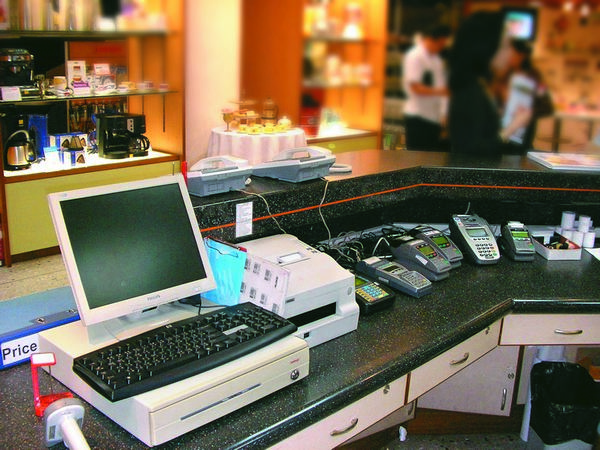The Indian payments space needs improvements in order to help the country move away from a cash system to an electronic system. Mahadevan Balakrishnan, who is now with the World Bank Payment System Development Group, but has seen the evolution of the Indian payments infrastructure, underscores some of the possible options for improvements of the system in the first of the two-part interaction:
Mohan: While debit cards in circulation in India has virtually doubled during the last five years, transactions per card per month is reported to have actually declined. How would you analyze this anomaly?

Mahadevan Balakrishnan maintains that government of India is a large user of cash and it should take steps to move transactions to electronic
Mahadevan Balakrishnan: This is not true. The transaction per debit card at POS has increased from 0.11 transactions per card per month in April 2011 when we had 230 million cards to 0.15 transactions per card per month in December 2015 (representing about 33% increase based on RBI monthly statistics) despite massive increase in debit cards to 643+ million. So, it is an increasing trend, yet < 2 transactions per card per year based on December 2015 data is too low. India has a long way to go. Secondly, per capita GDP and availability of acceptance infrastructure are low in India. These factors determine the number of transactions.
In contrast, it has been found that credit card transactions have shown significant increase in the last five years – in terms of number of transactions and the value of transactions. Does this indicate any specific trend?
My guess is that bulk of the credit cards are in few big cities that have a decent acceptance infrastructure. Also credit cards get used in preference to debit cards for a variety of reasons such as:
- official expenses (all corporate cards fall into this category and so many other cards – but we do not have break up)
- most e-com sites because of better fraud protection offered
- credit facility
- deferred payment options
- limiting the exposure
While some of the fraud related protection is now available to debit cards as well, the risk of losing the entire money in the account if debit card is exposed is real.
The Indian economy is still cash-bound. Just 5% of the personal consumption is accounted for by cards. In contrast, as much as 30% to 50% of spending in developed countries happen through cards? Will India reach this stage at any point of time?
The analysis of the payment statistics of Committee on Payments and Market Infrastructure (CPMI) (2014 data) indicates that higher the per capita GDP, higher is the number of per capita electronic payment transactions. That data also indicates that countries having higher levels of electronic transactions have indeed higher levels of acceptance infrastructure as well measured in terms of number of ATM and POS terminals per million inhabitants. Another analysis also reveals that high income countries have a better average per capita cashless transactions in comparison with medium income and low income countries as classified by WB based on GDP. India’s per capita GDP is not very high and therefore, it is not amusing that we have very little electronic transactions.
The availability of acceptance infrastructure measured in terms of number of ATMs and POS terminals per million inhabitants is an important factor. India’s number is much below that of even other BRICS nations in this aspect. For POS terminals for example, among BRICS countries, India has 889/million inhabitants and is the lowest among BRICS whereas Brazil has 24,589, Russia 8,889, China 11,650 and South Africa 6,854. This also contributes to less electronic transactions.
Merchants have a role to play too in increasing the acceptance. If the Merchant Discount Rate is not balanced, they will have no incentive to promote card payments. That could also be a reason for low adoption of electronic payments. Just look at the ATM transactions in India. They are rapidly growing – and I think one of the reason for that is there are no charges (mostly) for customers.
Will India reach that stage?
It’s difficult to guess. But, if India can take a few steps as mentioned below, maybe we will have a chance:
- Create an acceptance infrastructure – in terms of ATMs and POS – that are comparable with these nations not in terms of just the actual numbers, but the numbers per million inhabitants.
- Price the POS transaction in such a way that there is incentive for merchants to promote this. Without merchant support, it will never happen.
- Price the POS transactions cheaper than ATM transactions. Today, a Rs10,000 ATM transaction costs just Rs20 for customer if it gets charged. However, it costs the merchants Rs100 if the customer swipes the card at his terminals. No wonder we see merchants in India suggesting that customers withdraw the money and pay rather than use the card. So, unless we take steps to resolve this anomaly, I don’t see the debit card transactions at POS increasing dramatically.
- If I may add, a third of India’s cash withdrawals are interbank transactions and the issuing banks pay the acquiring banks more than Rs38 billion. However, their revenue through interchange on POS transactions even assuming they are 0.5% of the transaction value is not much and is about 1/5th of ATM interchange that issuing banks pay. If the issuing banks give this up, and this is passed on to merchants in the form of reduced interchange, there would be more debit card usage at POS and in fact banks would not be losers. They would have less ATM transactions and that saving more than compensates the loss of interchange revenue on POS. Such an approach will ensure that there is no revenue loss for acquiring banks and card schemes and they can continue to promote the acceptance infrastructure. Once desired levels of per capita debit card POS transactions are reached, this could be relooked.
- Funding for creating an acceptance can be done in several ways. One simplest and smartest way to do this is to impose a Re 1 cess on ATM and branch cash withdrawals in cities. Easily Rs1000 crore can be collected every year and in 5 years, we could build widely available acceptance infrastructure using latest approaches which are far cheaper than earlier. This cess approach ensures that there some dis-incentive for cash withdrawal. I have suggested this as a response to the recent paper by RBI on card acceptance seeking comments. Hope this will be looked at seriously. We have already seen that the current government is open to introduce cess – it has done for Swatch Bharat and Krishi Kalyan recently.

Cash continues to rule in India. What according to you are the measures needed to cut down cash transactions?
In fact, the government of India is a large user of cash. It should take steps to move transactions to electronic. DBT is a good beginning. While that is on the payment side, the government is not doing much on the receiving side. All the government agencies should accept card payments and they should pay the MDR like all merchants do. That is not the case now. If you buy tickets in IRCTC, there is a levy of surcharge now. This is one way that the government can increase its share of electronic payments.
This, along with measures mentioned in point 3 above, could perhaps take India to the next level. But note that other countries are also taking steps to move up the share of electronic transactions. So, while the number of per capita transactions would certainly increase with these measures, whether that would help to catch up with BRICS, I am not sure at this point in time.
One of the reasons for the increase in the number of debit cards in use is the government’s programs for financial inclusion. Does this increase translate into transactions?
Yes, eventually. Data showed that there is increase in per capita debit card at POS despite the large number of cards being added. Additional steps like what was mentioned earlier would accelerate this process.
Do you think charges levied on ATM transactions in India is a demotivating factor in the higher levels of use of ATMs? Can there be a differentiated charging? Alternatively, would you propose a percentage of the transaction value as the charge with a minimum and maximum cap?
We need to accept the fact that the ATM transactions ballooned in India after RBI put a cap on the maximum charges and allowed 10 free transactions a month. That hugely helped. Secondly, do ATM charges need a relook? I think it needs a relook and we need differentiated charging for smaller value transactions. According to a study, a good number of transactions in ATMs are for values < Rs1000 and average for them is around Rs500 for those transactions. So the customer fee of Rs20 translate to 4% for small value transactions. However, for values > Rs5000, the average transaction value is Rs8000 and at Rs20, the charge is only 0.25%. Is this OK? Why would low value transactions, mostly used by poor be charged 16 times more? This needs reconsideration. Also note that for low value transactions, the banks are also out of funds only for such low values. Therefore, if we could have a percentage like 0.25 for all ATM transactions or a differentiated interchange for low value transactions, I think it would hugely help.
How would you react to the proposal to facilitate cash withdrawals at merchant locations?
I would not personally suggest this because I want to promote electronic payments. There are other issues also to be sorted out on this. Particularly issues relating to counterfeit currencies and the like.
Mobile wallet is today becoming a highly popular channel in urban India. Do you see banks leveraging on wallet operators and their penetration?
Wallets, while offering convenience, may be expensive for customers once the discounts and freebies stop as customers lose the 4% to 6% interest earning options on savings account with linked cards. So if a payment bank can offer a savings account with interest, debit card and link the card to mobile channel, wouldn’t that be better? Since deposits up to Rs100,000 at banks are protected by deposit insurance, customers don’t lose anything at all.
With the huge success of PMJDY, I think India has addressed the challenges of providing bank accounts and cards to those who need them. In the absence of PMJDY, prepaid would have been the approach to provide access to financial services.
Mobile wallet may still be popular because one could limit the amount in the wallet and use it as a risk mitigation measure and a convenience measure. So, if that is the way they are being positioned, it may help increase the usage across India.
Before taking up the current assignment Mahadevan Balakrishnan was involved in creating many of the retail payment infrastructure in India in the form of expanded NFS, CTS, ACH, IMPS, ABP, AEPS and RuPay as the COO of NPCI in its initial formative years. The views expressed here are his personal views and do not represent the views of the organizations he is currently working or worked for.







